Facial Sculpting
What is Face Trim (Buccal Fat Pad Excision)?
While chubby cheeks may look cute on kids, they sometimes don’t work for adults who are looking for a more toned and chiseled look. For those whom chubby cheeks or excessive fat on the face is bothersome, there are solutions present that can address it.
They can opt for having their faces sculpted by getting the ‘buccal fat’ removed. The buccal pads are areas of fat in the lower cheeks that may appear because of a genetic disposition or simply from being overweight.
People opting for this surgical procedure are assured that they would have more defined cheeks which would in turn restore their self-confidence and self-esteem. The procedure doesn’t take long and there is minimal bruising and brief downtime.
There is no chance of any facial scarring or any kind of external incisions on the face. Like other elective procedures, it is important that you get a detailed and in-depth consultation with your doctor so that you can set realistic goals for yourself, and the doctor can plan an individualized treatment plan.

Transformative Facial Sculpting Treatment at Musk Clinic

What To Expect?
Once you are anesthetized and comfortable, incisions are made inside the mouth, between the cheek and gums. It is through this that excessive fat is removed and the cheek area sculpted. Dissolvable sutures are used to close the incisions.
There would be some swelling, bruising, numbness and discomfort. You would be asked to apply cool compresses to reduce the swelling and maybe given oral pain medication. Swelling usually resolves on its own in a few weeks as the healing progresses.
It is important that you take care of what you eat as there is a risk of bacterial infection. You would be given an anti-bacterial mouthwash and advised to keep your tongue away from the incision site.
Why Choose Musk Clinic?
FAQs
Buccal fat extraction is done on an outpatient basis under light sleep sedation, regional anesthesia with sedation, local anesthesia with oral sedation, or general intravenous sedation, depending on your surgeon’s preference and whether you’re having additional procedures done at the same time (for example, a facelift).
After you are anesthetized, your surgeon will make an incision on one side of the inside of your mouth between your upper molars and inner cheek. He or she will then push a bit on the outside of the cheek to push the buccal fat back through the incision, removing small bits of the fat pad a little at a time.
This process is repeated on the other side of your face and the incisions are closed.
Following your buccal fat extraction surgery, your lower face and mouth will be sore, swollen and tender. Any bruising will be on the inside of your mouth.
You may be put on a special diet of foods that are not acidic, and you may be instructed to sleep with your head elevated and to rinse your mouth with an antiseptic mouthwash several times each day. The swelling should dissipate after about two weeks.











